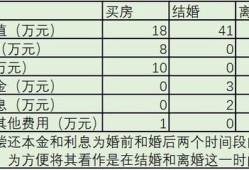财产特性房产英语怎么说(财产特点)
- 房产
- 2025-07-21
- 152
Understanding Property Characteristics: How to Express Real Estate Features in English
In the world of real estate, the ability to effectively communicate property characteristics is crucial for both buyers and sellers. Whether you are a real estate agent, a property owner, or simply interested in the real estate market, knowing how to describe the unique features of a property in English is essential. This article will delve into the key terms and phrases used to express property characteristics in English, focusing on the term "property characteristics" itself and its application to real estate.
Firstly, let's clarify what "property characteristics" mean. In the context of real estate, property characteristics refer to the specific attributes and qualities of a property that distinguish it from others. These characteristics can include physical attributes, location, amenities, and other factors that contribute to the value and appeal of the property.

Here are some common English terms and phrases used to describe property characteristics:
Physical Attributes:
- Structure: The construction and design of the building, such as "single-family home," "apartment," or "detached villa."
- Size: The dimensions of the property, such as "3-bedroom," "2,000 square feet," or "4,000 square meters."
- Layout: The arrangement of rooms and spaces within the property, such as "open-concept," "floor-to-ceiling windows," or "spacious living area."
- Condition: The current state of the property, such as "well-maintained," "renovated," or "needs repairs."
Location:
- Proximity to amenities: The property's distance to schools, shopping centers, hospitals, and other facilities, such as "close to schools," "nearby shopping," or "walking distance to public transport."
- Neighborhood: The general area where the property is located, such as "up-and-coming neighborhood," "quiet residential area," or "downtown location."
- Views: The scenery visible from the property, such as "ocean views," "mountain views," or "city skyline."
Amenities:
- Outdoor spaces: Features like gardens, balconies, terraces, or pools, such as "private garden," "sunlit balcony," or "swimming pool."
- Indoor features: Special touches within the property, such as "home theater," "wine cellar," or "smart home technology."
- Security: Measures in place to ensure the safety of the residents, such as "24-hour security," "alarms," or "secure parking."
Additional Characteristics:
- Historical significance: The property's historical background or cultural value, such as "historical landmark," "Victorian architecture," or "renowned designer."
- Energy efficiency: The property's energy-saving features, such as "solar panels," "high-efficiency heating," or "green building certification."
- Zoning: The legal use and development potential of the property, such as "zoned for residential use," "commercial potential," or "mixed-use development."
When describing property characteristics in English, it is important to be clear, concise, and accurate. Here are some tips for effective communication:
- Use descriptive adjectives to paint a picture of the property, such as "elegant," "luxurious," or "cozy."
- Quantify measurements and distances to provide a sense of scale, such as "3 bedrooms, 2 bathrooms, 1,500 square feet."
- Highlight unique selling points that differentiate the property from others, such as "exclusive water views" or "private access to a beach."
- Be honest and transparent about any potential issues or limitations, as this builds trust with potential buyers or tenants.
In conclusion, understanding how to express property characteristics in English is vital for anyone involved in the real estate industry. By using the appropriate terms and phrases, you can effectively communicate the unique qualities of a property, helping to attract interested buyers and secure successful transactions.























